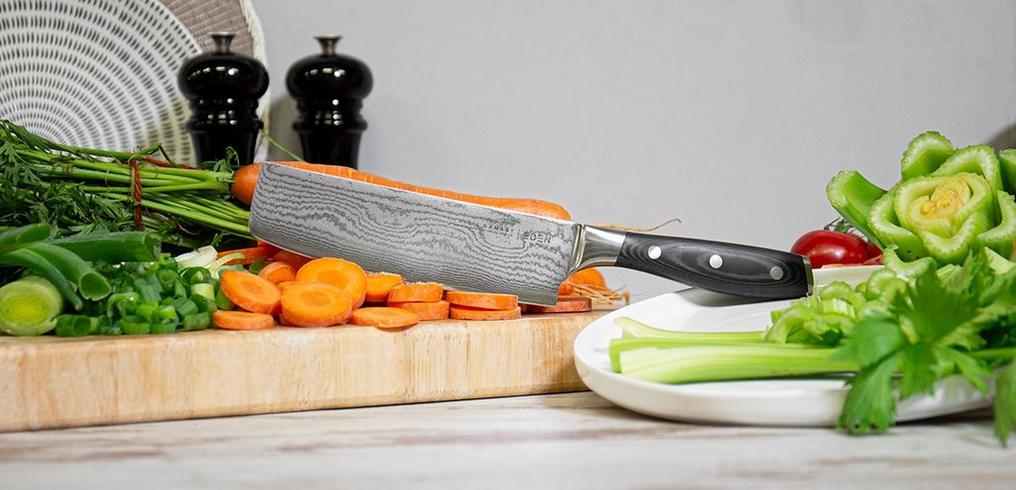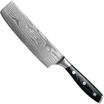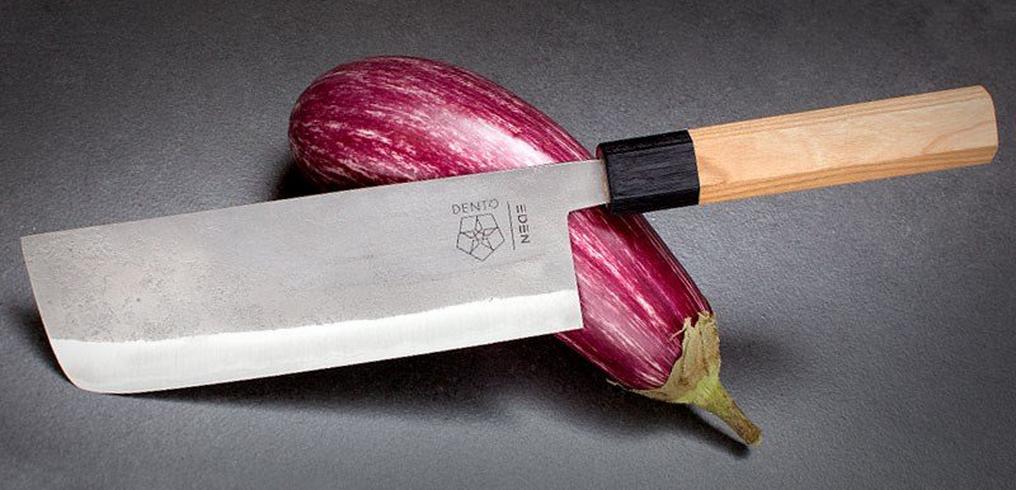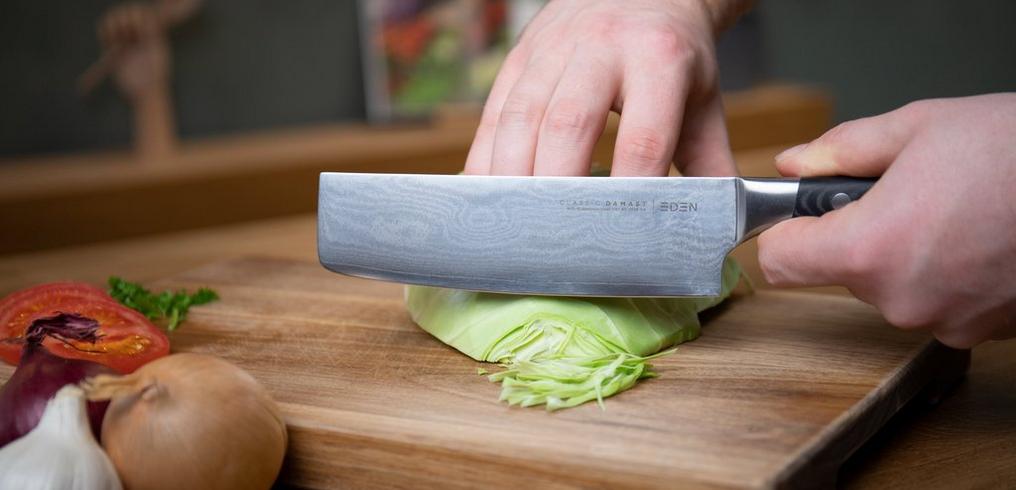
Nakiri knives: Japanese vegetable knives for finely cut vegetables
A nakiri is a traditional Japanese vegetable knife. In Japan, vegetable knives are known as nakiri (double-sided grind) or usuba (one-sided grind). You can recognize a nakiri by its rectangular blade shape. The tip of the knife is slightly rounded. This is, without a doubt, the knife you use to finely cut carrots, cucumber, cabbage and any other types of vegetables. But chopping herbs is also a piece of cake. At Knivesandtools, you will find nakiris from brands such as Sakai Takayuki, Tojiro, Miyabi, Kai and Eden.










































The blade of a nakiri
A nakiri is characterized by its straight blade that enables you to use the entire cutting surface. The edge is wafer-thin and razor-sharp. This allows you to cut very precisely. With a nakiri, you can chop an onion into much smaller pieces than with any other kitchen knife. Most nakiris have a double-sided grind which makes the knife great for both left and right-handed use. There are exceptions, so pay close attention whether you are dealing with a single or double-edge grind when purchasing a nakiri.
How do you choose a nakiri?
Nakiris tend to look very similar. The blade shape and blade length don't tend to differ much. However, one thing to look out for is the type of handle. For example, there are traditional D-handles or Wah-handles where the tang of the blade is burned or glued directly into a wooden handle. But there are also more Western nakiris which feature a steel bolster at the transition between handle and blade. A bolster makes washing this knife a little easier, but it also adds weight. You have to decide which option you prefer.








